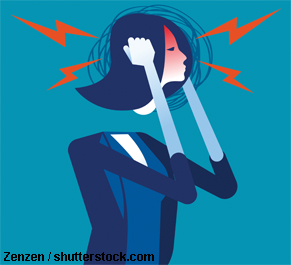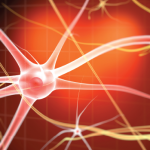 ORLANDO—Chronic pain affects many people with rheumatic disease, and its management often falls on rheumatology providers. We want to help our patients feel better but may struggle to do so when standard immunomodulatory therapies fail to provide relief. At the 2022 ACR Education Exchange, April 28–May 1, Delia Chiaramonte, MD, chief, Division of Integrative Palliative Medicine, Greater Baltimore Medical Center, gave a presentation on how we can better help our patients cope with chronic pain, augment physical function and improve quality of life.
ORLANDO—Chronic pain affects many people with rheumatic disease, and its management often falls on rheumatology providers. We want to help our patients feel better but may struggle to do so when standard immunomodulatory therapies fail to provide relief. At the 2022 ACR Education Exchange, April 28–May 1, Delia Chiaramonte, MD, chief, Division of Integrative Palliative Medicine, Greater Baltimore Medical Center, gave a presentation on how we can better help our patients cope with chronic pain, augment physical function and improve quality of life.
More Than Nociception
Dr. Chiaramonte began with an important point: Pain is more than nociception. Nociception is the process by which painful stimuli are communicated through the peripheral and central nervous system (CNS). Pain is affected by emotions, genetics and the context of a person’s life (e.g., social connections, current circumstances).
“Pain isn’t always about tissue damage,” she said. “There’s a part that’s brain based, and what the brain decides in terms of threat can either increase or decrease pain. So a big part of chronic pain management is educating our patients about the top-down [effect] of the brain on pain.”
An increased perception of threat increases pain. Put simply, the brain receives a sensation and then decides if it hurts. Example: Anxiety is a generalized sense of threat (i.e., everything is bad and scary) and increases pain. Providers may inadvertently increase perception of threat through word choice.
“When we say things like: ‘This is the worst MRI I’ve ever seen’ or ‘You’re bone on bone,’ patients are understandably alarmed. Perceived threat increases and, in turn, so does pain. We need to be thoughtful about our word choices. Decreasing the sense of threat is part of managing a patient’s pain,” Dr. Chiaramonte said.
Catastrophizing—or viewing a situation as considerably worse than it actually is—also worsens pain by increasing the perception of threat. In a study of 38 healthy people in which topical capsaicin was applied to the dorsum of the hand, subjects who showed the largest initial increases in catastrophizing reported the greatest subsequent increases in pain.
“This study was so interesting because it showed that the catastrophizing actually comes first. So managing catastrophizing is key,” she said.1
Central sensitization—the amplification of neural signaling within the CNS that elicits pain hypersensitivity—also plays a role in chronic pain. When central sensitization is present, the CNS may distort neutral stimuli, such as touch and movement.


